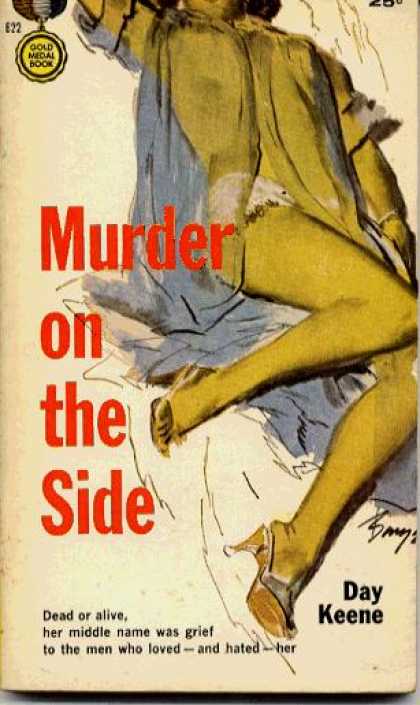
Ed here: This is from the fine great website Pulp Serenade. Cullen Gallagher's take on Day Keene
is one of the most unique and nuanced I've ever read. This particular piece speaks of a time that is almost unimaginable. Gold Medal Originals being reviewed in The New York Times. That Anthony Boucher guy really was a saint.
Cullen Gallagher:
So, what did the critics make of someone like Day Keene back in the day?
This is the first in what I hope will
become an ongoing series of explorations into criticism on classic writers, and
how their works were received in their own time. For my first posting, I chose
one of my favorite novelists: Day Keene (real name Gunard Hjerstedt).
When going through newspaper archives
online, I was surprised by how often Day Keene’s work was reviewed in the New
York Times. What wasn’t surprising was that it was mostly the work of
Anthony Boucher, one of the most famous and important mystery reviewers of the
20th century, and perhaps one of the best critics in general. His reviews may
have been short, but they were unerringly perceptive, and often pretty damn
funny.
The one thing that kept popping up
from review to review was the amount of sex and violence in Day Keene’s books –
apparently the critics were sufficiently shocked enough to warn readers in
advance. Oh, Gunard…
Without further ado, I am handing
things over to the critics!
Framed in Guilt: The
story is a great deal better than the atrociously punning title might lead one
to hope. –Unsigned (New York Times, Jan 16, 1949)
Death House Doll: Action-crammed, legitimately sexy, with some ironic bite to
its hardness, it’s a strong job of good pulp story-telling, in the “Black Mask”
tradition. –Anthony Boucher (New York Times, Jan 24, 1954)
Joy House: A bit more conventional than usual… but the story of a
murderer on the lam who seeks concealment in a curious sexual alliance is well
constructed and sharply twisted in the James M. Cain manner. –Anthony Boucher
(New York Times, Jul 25, 1954)
Who Has Wilma Lathrop? Day Keene manages to treat a vivid and violent plot with
unusual restraint and quietly convincing realism… Sex and brutality are here
integral to the plot and handled with skill and taste, and the writing, in characterization,
prose and movement, is the best I’ve read from the always interesting Mr.
Keene. –Anthony Boucher (New York Times, Jul 10, 1955)
Bring Him Back Dead: It’s all somewhat oversexed and oversimplified, but fast and
concise. –Anthony Boucher (New York Times, Oct 21, 1956)
Passage to Samoa: Combines murder-mystery with the unfailing appeal of
ship-wrecked treasure in a lively and enjoyable adventure tale, in which the
copious lashings are necessary to the plot. –Anthony Boucher (New York Times, Jan
18, 1959)
for the rest go here:
http://www.pulpserenade.com/2010/11/day-keene-critical-perspectives-1.html

1 comment:
This is great!
Post a Comment